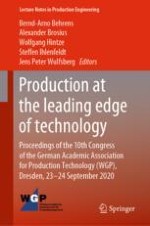This congress proceedings provides recent research on leading-edge manufacturing processes. The aim of this scientific congress is to work out diverse individual solutions of "production in the border area" and transferable methodological approaches. In addition, guest speakers with different backgrounds will give the congress participants food for thoughts, interpretations, views and suggestions.
The manufacturing industry is currently undergoing a profound structural change, which on the one hand produces innovative solutions through the use of high-performance communication and information technology, and on the other hand is driven by new requirements for goods, especially in the mobility and energy sector. With the social discourse on how we should live and act primarily according to guidelines of sustainability, structural change is gaining increasing dynamic.
It is essential to translate politically specified sustainability goals into socially accepted and marketable technical solutions. Production research is meeting this challenge and will make important contributions and provide innovative solutions from different perspectives.
